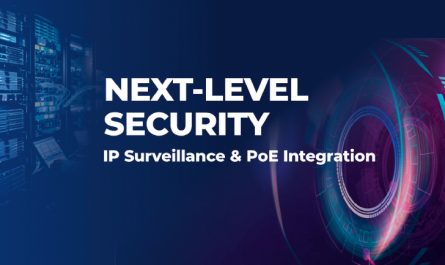In today’s digital world, building a dynamic and resilient network infrastructure is crucial for any business. Such an infrastructure ensures that the network can adapt to changing conditions, recover from failures, while providing a high level of performance and security. Through this blog we would like to share some of the key principles/ strategies to consider when designing and implementing a robust network infrastructure.
- Network Redundancy : Redundancy is an important part of network infrastructure where we consider either multiple path or multiple hardware components. In case of redundancy through multiple paths to the core network, if primary fails then secondary path can take over. This helps data to travel across multiple routes in case of any failures.

Redundancy for hardware failures is also as important as path failure. We can achieve this by using redundant Hardware, Power Supply and FAN Module. To avoid single point of failures specially at the Core Network, we should always opt for two units of Core switches/ router/firewall, as this will ensure that at least one device is functioning smoothly, while case second fails. With D-Link, redundancy can be achieved using both Layer 2 as well as Layer 3 network design architecture. D-Link support Physical Stacking/ ERPS for Layer 2 redundancy and VRRP/ MLAG for Layer 3 redundancy.
*Above image illustrates the network architecture for 10Gig backbone network using Core switch DXS-F3400-28SC and DGS-3130 series switch which takes care of redundancy, load balancing, scalability and network security using 2-layer architecture.
- Network Load Balancing: Load balancing helps in distributing network traffic evenly across multiple paths to ensure proper utilization of all the links/ hardware components. Further it also helps to distribute network traffic evenly across multiple servers or paths to optimize resource utilization. D-Link supports dynamic routing protocols like OSPF to support ECMP to load balance the traffic across multiple paths.
- Network Scalability: When building network infrastructure, we should focus on scalability so that it can easily carry future network traffic usage. Here scalability is evaluated in terms of increase in of number of users, hardware components, technology, etc. D-Link supports all the options starting with 8, 24, and 48 port switch with GE, Multi-gig gig, 10gig, 40gig and 100gig connectivity.
- Network Security: Security is an integral and crucial part of any network infrastructure. Network administrators must implement robust network security with the help of hardware components like Switch, Firewall, Wireless, etc., as security is not limited to firewall alone. D-Link equipment’s support features like broadcast, multicast storm, IP MAC port binding, MAC based ACL, 802.1x in conjunction with NAC control, Dynamic ARP inspection and MACSEC. It also supports secure HTTP access with TLS 1.1,1.2 and 1.3.
- Network Monitoring: Monitoring network must be on top of the wish list of every network admin to help organisation understand the health of their network. Monitoring of the network helps us in understanding network performance, traffic, reports bugs, etc. Network monitoring features such as secure authentication for MIB using SNMPv3, CFI (connectivity fault management), OAM, Dyeing GASP, Cable Diagnostic compiling private and public MIBs etc. are supported by D-Link. By incorporating these principles and strategies, we can build a dynamic and resilient network infrastructure that can support current network needs while being adaptable to future challenges and growth.




